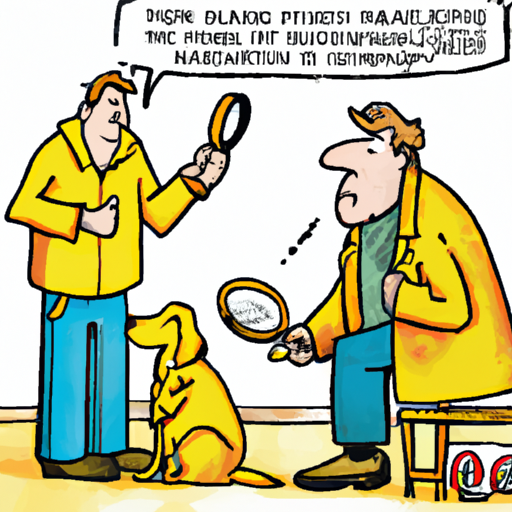As a caring pet owner, it’s vital to be aware of the signs and symptoms that can indicate your beloved canine companion is dealing with an unwanted infestation of fleas. This guide will walk you through five key indicators to look out for, as well as offer insight into the potential implications, prevention, and treatment options for this common yet pesky problem.
H2: Recognizing the Signs of a Flea Infestation
Fleas are tiny, fast-moving insects that can be difficult to spot. However, there are several telltale signs that your dog may have a flea infestation:
- Excessive Scratching, Licking or Biting at the Skin: Fleas are notorious for causing severe itching. If your dog is scratching, licking or biting at his skin more than usual, it could be a sign of fleas.
- Hair Loss or Hot Spots: Frequent and intense scratching can lead to patches of hair loss, and in some cases, raw and inflamed skin, also known as “hot spots”.
- Flea Dirt: Flea dirt, or feces, resembles small, dark grains of sand or pepper. Often, it’s easier to spot flea dirt than the actual fleas themselves.
- Flea Eggs: Flea eggs are tiny, white ovals that are harder to spot due to their color.
- Visible Fleas: If you see small, fast-moving, brown insects on your dog’s skin or fur, it’s likely you’re dealing with fleas.
H2: The Implications of a Flea Infestation
Fleas can pose a significant health risk to your canine companion. Some potential implications include:
- Flea Allergy Dermatitis: This is an allergic reaction to flea bites and can cause severe discomfort and skin damage.
- Tapeworms: Fleas can carry tapeworm larvae. If your dog swallows a flea while grooming, he could become infected with tapeworms.
- Anemia: In severe cases, especially with puppies or small dogs, a heavy flea infestation can cause anemia due to blood loss.
H2: Preventing a Flea Infestation
Preventing a flea infestation is far easier than treating one. Here’s how you can keep fleas at bay:
- Use Prevention Products: There are numerous products available, such as flea collars, oral tablets, and topical treatments, that can prevent fleas.
- Regular Cleaning: Regularly clean your pet’s bedding and vacuum your home, especially carpeted areas and upholstery.
- Regular Check-ups: Regular vet check-ups can help detect a flea problem early, before it becomes a full-blown infestation.
H2: Treating a Flea Infestation
If your dog has fleas, it’s important to act fast to get rid of them:
- Use Flea Treatment Products: Use a flea treatment product prescribed by your vet. These can include oral medications, shampoos, and topical applications.
- Treat Your Home: It’s also important to treat your home to eliminate fleas and their larvae. This can involve cleaning your home thoroughly, using a vet-approved home spray, and possibly treating your yard.
- Consult Your Vet: If the infestation is severe or if your dog appears unwell, consult your vet immediately. They may suggest additional treatments or interventions.
H2: Frequently Asked Questions (FAQs)
Q: How quickly can fleas multiply?
A: Fleas can reproduce rapidly. A single female flea can lay up to 50 eggs per day, which can hatch into adults in as little as two weeks.
Q: Can fleas live on humans?
A: While fleas can bite humans, they prefer to live and breed on animals with fur.
Q: How long do fleas live?
A: The lifespan of a flea can vary, but typically, they live between 2 to 3 months.
Q: Can fleas survive in cold weather?
A: While extreme cold can kill fleas, they can survive in a warm, humid environment like your home year-round.
Q: Can my dog get fleas even if he doesn’t interact with other animals?
A: Yes, fleas can infest your home through various means, such as through your clothing or other pests like rodents.
Being a vigilant and informed pet owner is the first step in ensuring your furry friend remains happy, healthy, and flea-free. If you suspect your dog has fleas, don’t hesitate to reach out to your veterinarian for prompt and professional advice.



